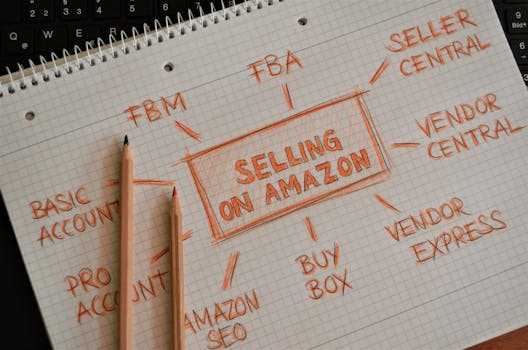High-Yield Dividend Stocks: Feasting on Yields Up to 9% – Are These Bargains Too Good to Be True?
Are you looking for ways to boost your investment income in this volatile market? High-yield dividend stocks might be the answer. With yields reaching up to 9% in some cases, these seemingly lucrative opportunities are attracting considerable attention. But before you dive headfirst into this potentially rewarding – yet risky – investment strategy, let's explore the landscape of high-yield dividend stocks, uncovering both the enticing prospects and potential pitfalls. This deep dive into high-dividend paying stocks will cover everything from identifying potential bargains to understanding the risks involved. We'll even look at specific examples of stocks currently offering compelling yields.
Understanding High-Yield Dividend Stocks
High-yield dividend stocks, often called high-dividend stocks or dividend aristocrats (for those with a history of consistent dividend increases), are equities that offer significantly higher dividend payouts compared to the overall market average. While a yield of 2-4% is considered reasonable for many blue-chip stocks, high-yield stocks often boast yields of 5% or more. This higher payout can be very attractive to income-seeking investors, particularly retirees or those looking to supplement their income streams. However, it's crucial to understand that high yields often come with a higher level of risk.
Why High Yields Can Be Risky
The primary reason for caution is the correlation between high yields and increased risk. Several factors can contribute to a high dividend yield:
- Financial Distress: Companies facing financial difficulties might increase dividend payouts to attract investors, even if it's unsustainable in the long run. This can lead to dividend cuts or even bankruptcy.
- Market Mispricing: Sometimes, a company's stock price might decline significantly due to negative market sentiment or company-specific issues, leading to an artificially inflated yield. The yield is high because the stock price is low, not necessarily because the dividend payout is exceptionally generous.
- Industry Downturn: Companies in struggling industries might offer high yields to compensate investors for the increased risk associated with their sector.
- Unsustainable Payout Ratios: A high payout ratio (the percentage of earnings paid out as dividends) can be a red flag, indicating the company may not be able to maintain its dividend payments consistently.
Identifying Potential Bargain Dividend Stocks
Finding truly undervalued high-yield dividend stocks requires careful due diligence. Here's what to look for:
- Strong Fundamentals: Analyze the company's financial statements, focusing on key metrics like revenue growth, profit margins, debt levels, and free cash flow. A consistently profitable company with strong cash flow is more likely to sustain its dividend payouts.
- Stable Dividend History: Look for companies with a long history of consistent dividend payments and, ideally, a history of dividend increases. Dividend aristocrats, as mentioned above, are a good place to start your research.
- Reasonable Payout Ratio: A payout ratio that's not excessively high (typically below 70%) is generally preferred. This suggests the company has enough cash flow to cover its dividend obligations and reinvest in its business.
- Industry Outlook: Assess the prospects of the industry in which the company operates. A company in a growing industry is more likely to be able to maintain its dividend payouts.
- Valuation: Consider the company's valuation relative to its peers and historical trends. Look for stocks that might be undervalued based on their fundamentals and future growth potential.
Tools for Finding High-Yield Dividend Stocks
Numerous resources can assist in your search for high-yield dividend stocks:
- Stock Screeners: Online stock screeners allow you to filter stocks based on various criteria, including dividend yield, payout ratio, and financial metrics.
- Financial News Websites: Reputable financial news sources often publish articles and analyses on high-yield dividend stocks.
- Brokerage Platforms: Many brokerage platforms offer tools and resources to help investors screen and analyze stocks.
Examples of High-Yield Dividend Stocks (Disclaimer: This is not financial advice)
It is crucial to conduct your own thorough research before investing in any stock. The following are examples and should not be considered recommendations. Always consult with a qualified financial advisor before making investment decisions.
Some sectors known for high-yield dividend stocks include real estate investment trusts (REITs), utilities, and energy companies. However, remember the inherent risks associated with these sectors. For instance, REITs are highly sensitive to interest rate changes, while energy companies face commodity price volatility. Analyzing these companies' financial health and the potential impact of external factors is critical before investing.
Note: Dividend yields fluctuate based on stock price changes. The yields mentioned here are for illustrative purposes and might not reflect current market conditions.
Managing the Risks of High-Yield Dividend Investing
While the potential returns from high-yield dividend stocks can be attractive, managing the risks is critical:
- Diversification: Don't put all your eggs in one basket. Diversify your portfolio across different high-yield stocks and asset classes to mitigate the impact of any single investment underperforming or failing.
- Regular Monitoring: Keep a close eye on the financial health of the companies in which you invest. Stay updated on industry trends and any changes in the companies’ dividend policies.
- Consider Reinvesting Dividends: Reinvesting your dividend income can help you accelerate your returns over the long term through compounding.
Conclusion: A Balanced Approach
High-yield dividend stocks can be a valuable component of a well-diversified investment portfolio, offering the potential for substantial income generation. However, it is imperative to approach this investment strategy with caution, awareness of the risks involved, and a thorough understanding of the underlying companies and market conditions. Remember that a high yield is not always indicative of a good investment. Due diligence and careful risk management are critical to reaping the rewards and avoiding the potential pitfalls of this approach. Consult a financial advisor to help you determine if high-yield dividend investing is the right strategy for your personal financial goals and risk tolerance.




















